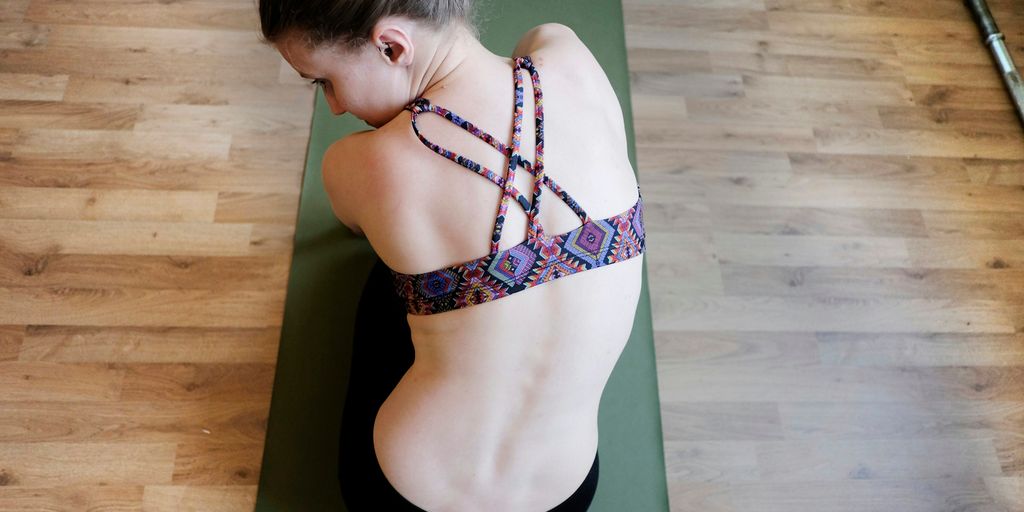
Finding the Perfect Fit: Understanding Standard Yoga Mat Size
Choosing the right yoga mat can make a big difference in your practice. From comfort to safety, the size and material of the mat can impact your performance. This guide will help you understand the standard yoga mat size and how to pick the best one for you.
Key Takeaways
- Picking the right yoga mat can improve your yoga practice.
- Standard yoga mats have specific dimensions to consider.
- Materials of yoga mats can affect their grip and durability.
- Specialty mats are available for different types of yoga.
- Proper care can extend the life of your yoga mat.
Importance of Choosing the Right Yoga Mat
Impact on Performance
Choosing the right yoga mat can greatly affect your performance. A mat that suits your needs can help you maintain balance and stability during poses. A good mat can make your practice more effective and enjoyable.
Preventing Injuries
Using the correct yoga mat can help prevent injuries. Thicker mats provide more cushioning, which is great for sensitive joints. On the other hand, thinner mats offer better stability, making them ideal for balance poses. Picking the right mat can keep you safe and comfortable.
Enhancing Comfort
A suitable yoga mat enhances comfort during practice. It provides a soft surface to practice on, reducing strain on your body. Comfort is key to a pleasant yoga experience, and the right mat can make all the difference.
A well-chosen yoga mat can transform your practice, making it safer, more comfortable, and more effective.
Dimensions of a Standard Yoga Mat
Length and Width
The standard yoga mat size is typically 68 inches long and 24 inches wide. This size fits most practitioners comfortably. However, if you're taller, you might need a longer mat. Finding the right size ensures you have enough space for all poses.
Thickness Options
Yoga mats come in various thicknesses, usually ranging from 1/16 inch to 1/4 inch. Thicker mats provide more cushioning, which can be beneficial for sensitive joints. On the other hand, thinner mats offer better stability and balance. Choose the thickness that best suits your practice and comfort level.
Weight Considerations
The weight of a yoga mat can vary based on its material and thickness. Lightweight mats are easier to carry around, making them ideal for travel. Heavier mats, while less portable, often offer more durability and support. Consider how often you'll be transporting your mat when deciding on the weight.
Remember, the right yoga mat size and thickness can greatly enhance your practice, providing both comfort and stability.
Material Choices for Yoga Mats
Eco-Friendly Materials
Choosing eco-friendly materials for your yoga mat is a great way to help the environment. Many mats are made from natural rubber, cork, or jute. These materials are biodegradable and free from harmful chemicals. Opting for eco-friendly mats can reduce your carbon footprint.
Durability and Longevity
When picking a yoga mat, consider how long it will last. Mats made from PVC are very durable and can last for years. However, they are not as eco-friendly. On the other hand, mats made from natural materials might wear out faster but are better for the planet. Durability is key if you practice yoga often.
Texture and Grip
The texture and grip of a yoga mat can affect your practice. Mats with a sticky texture provide better grip, which helps in maintaining poses. Rubber and TPE mats usually offer excellent grip. If you sweat a lot during your practice, look for mats with a textured surface to prevent slipping.
A good grip on your yoga mat can make a big difference in your practice, especially for beginners.
Specialty Yoga Mats for Different Practices
Travel Yoga Mats
Travel yoga mats are designed to be lightweight and easy to carry. They are usually thinner than regular mats, making them easy to fold or roll up. These mats are perfect for yogis on the go who need a mat that fits in a suitcase or backpack. However, the thinness might compromise comfort and cushioning.
Hot Yoga Mats
Hot yoga mats are made to handle the extra sweat and heat of hot yoga sessions. They often have a textured surface to provide better grip even when wet. Some mats are also made from materials that absorb moisture, helping to keep the surface dry and safe. Durability is key here, as these mats need to withstand frequent washing and intense use.
Extra Long and Wide Mats
Extra long and wide mats offer more space for movement, which is especially beneficial for taller individuals. These mats enhance comfort, stability, and alignment during practice, reducing injury risk. When choosing an extra long mat, consider the length, width, material, and durability to ensure a fulfilling yoga experience.
Caring for Your Yoga Mat
Cleaning Techniques
Regular cleaning of your yoga mat is essential to maintain hygiene and extend its lifespan. Wipe down your mat after each use with a damp cloth and mild soap. For a deeper clean, you can soak it in water mixed with a bit of vinegar. Always let your mat air dry completely before rolling it up.
Storage Tips
Proper storage can help keep your yoga mat in good condition. Store your mat in a cool, dry place away from direct sunlight. Rolling your mat loosely can prevent creases and damage. If you have limited space, consider using a mat bag or strap for easy storage and transport.
When to Replace Your Mat
Knowing when to replace your yoga mat is crucial for maintaining a safe practice. Signs that it's time for a new mat include visible wear and tear, loss of grip, and reduced cushioning. If you notice any of these issues, it's best to invest in a new mat to ensure comfort and safety during your practice.
Taking good care of your yoga mat not only enhances your practice but also ensures that your mat lasts longer, providing better value for your investment.
Comparing Standard Yoga Mat Sizes to Alternatives
Compact Mats
Compact mats are great for people who travel a lot or have limited storage space. These mats are usually shorter and thinner than standard mats, making them easy to roll up and carry. However, they might not offer the same level of comfort and support.
Oversized Mats
Oversized mats provide extra space for those who need it. These mats are longer and wider than standard mats, giving you more room to move. This can be especially helpful for taller individuals or those who practice more dynamic styles of yoga. Keep in mind that these mats can be heavier and harder to transport.
Customizable Mats
Customizable mats allow you to choose the dimensions that best suit your needs. You can pick the length, width, and thickness that work for you. This option is perfect for those who have specific requirements or preferences. However, customizable mats can be more expensive and may take longer to produce.
When choosing a yoga mat, consider your personal needs and how you plan to use the mat. The right size can make a big difference in your practice.
How to Test a Yoga Mat Before Buying
Checking for Comfort
When choosing a yoga mat, comfort is key. Spend a few minutes sitting or lying on the mat to see how it feels. Make sure it provides enough cushioning for your joints, especially if you have sensitive knees or elbows.
Assessing Grip
A good yoga mat should have a non-slip surface. Test the mat by doing a few poses, like downward dog, to see if your hands and feet stay in place. This is important for maintaining stability and preventing injuries.
Evaluating Durability
Durability is another important factor. Check the mat's material and thickness. A durable mat will not tear or wear out quickly. Look for mats made from high-quality materials that can withstand regular use.
Testing a yoga mat before buying ensures you find the perfect fit for your practice. It helps you avoid discomfort and enhances your overall yoga experience.
Before you buy a yoga mat, it's important to test it out. Check for comfort, grip, and durability. Try a few poses to see how it feels. Want to know more tips? Visit our website for a complete guide on choosing the perfect yoga mat.
Conclusion
Choosing the right yoga mat size is important for a good practice. It helps you stay comfortable and safe while doing yoga. Remember to think about your height, the space you have, and the type of yoga you do. A mat that fits you well can make your yoga sessions more enjoyable and effective. So, take your time to find the perfect fit, and you'll be on your way to a better yoga experience.
Frequently Asked Questions
Why does the size of a yoga mat matter?
The size of a yoga mat is important because it can affect your comfort, performance, and safety during yoga. A mat that's too small might not give you enough space to move, while a mat that's too big can be hard to carry around.
What are the standard dimensions of a yoga mat?
A standard yoga mat is usually about 68 inches long and 24 inches wide. This size works for most people, but there are other sizes available for those who need more or less space.
How thick should a yoga mat be?
The thickness of a yoga mat can vary, but most standard mats are about 1/8 inch thick. Thicker mats, like those that are 1/4 inch, can provide more cushioning, which is good for people with sensitive joints.
What materials are yoga mats made from?
Yoga mats can be made from different materials, including PVC, rubber, and eco-friendly options like cork or jute. Each material has its own benefits, like better grip or being more environmentally friendly.
How do I clean my yoga mat?
To clean your yoga mat, you can use a mixture of water and mild soap. Wipe down the mat with a damp cloth and let it air dry. Some mats can also be machine washed, but you should always check the care instructions first.
When should I replace my yoga mat?
You should replace your yoga mat when it starts to wear out or lose its grip. This can depend on how often you use it, but a good rule of thumb is to get a new mat every year or so.


